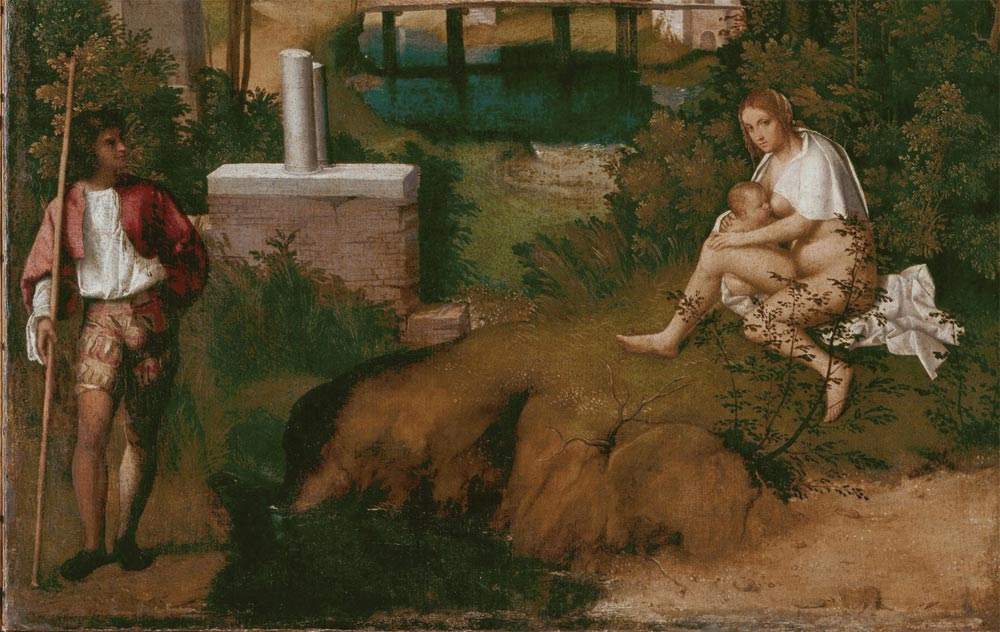An important discovery, which bears the signature of archivist Francesca Bortolanza, sheds light on a long-standing problem in Venetian art history: the surname of Giorgione (Castelfranco Veneto, 1478 - Venice, 1510), the author of The Tempest, an illustrious name in the Venetian Renaissance. In the State Archives of Venice, Bortolanza, a native of Castelfranco Veneto, has in fact discovered a document confirming Giorgione’s membership in the wealthy Barbarella family, which thus refutes the information written by Giorgio Vasari, who in Lives (1568) described Giorgione as being of “very humble stock.” More reliable sources had Carlo Ridolfi, who in Le meraviglie dell’arte (1648) reported that the artist was originally “from a comfortable family of Vedelago,” also accounting for the memorial plaque of the Barbarella family (which counted the artist among its members) walled up in the old city cathedral. The document found by Bortolanza in the Venetian fund Giudici di Petizion is the subject of the essay published in issue 192 of the open source journal Engramma, directed by Monica Centanni.
According to Bortolanza, the discovery would put an end to the diatribe on the painter’s origins, significantly shaking historian Renata Segre’s thesis dating back to 2011, when she had identified a "Giovanni Gasparini,“ who had never before appeared in any document deemed relevant, as Giorgione’s father. The name was found in the introduction to an inventory dated March 14, 1511, certainly relating to the estate of the late Zorzi da Castelfranco ”pictor,“ in the Venetian fund Giudici del Proprio. The petition had been moved by the Castelfranco notary Francesco Fisolo, ”uti heres" by the late Ale(x)andra, widow of Giovanni Gasparini, to recover her dowry, owed to her after the death of her spouse. Right transmitted to the heir after her departure.

On the contrary, other scholars, most notably Lionello Puppi, argued that the text had errors in transcription and interpretation: the document’s name Ale(x)andra could be the mistranscription of “Altadona,” mother of “Zorzi Barbarella” based on documentary evidence made known in the Castelfranco exhibition catalog published in 2009. As for “Gasparini,” interpreted as a surname, it could be assumed to be the name “Gasparino” declined in the genitive case. The name of the father of Giovanni Barbarella, husband of Altadona, would thus have been Gasparino, as evidenced by fifteenth-century notarial acts preserved in Bassano.
The new Venetian document from the Giudici di Petizion fund (competent in matters of both dowry and commissariae, i.e., management of the property left by the deceased, including those who died without having made a will), six days after the inventory and evidently closely related to it, testifies that the petition of the aforementioned Francesco Fisolo had been made “vigore dotis” of Altadona da Castelfranco: the attempt to recover the dowry, the motivation behind the order to inventory the painter’s property, was therefore related to the dotal compensation due to Altadona, widow of Giovanni [Barbarella] del fu Gasparino. Not of an Aleandra, Giorgione’s alleged stepmother, widow of Giovanni Gasparini. Toward the end of the deed is written that “ser Franciscus Fisulo de Castro Francho habuerit et receperit omnia bona predicte domine Altedone [formerly: de Castro Francho] vigore dotis ipsius.” The termination is dated March 20, 1511, and according to the author of the discovery allows the previous doubts to be dispelled: the name “Altadona” (which was not common even in those days) had been transcribed erroneously to Aleandra in the preface of the March 14, 1511 inventory; the notary Francesco Fisolo thus obtained the goods by virtue of the claim to Altadona’s dowry. It is likely that Francesco Fisolo was Altadona’s heir, it is not known on the basis of what kinship. However, the formula “uti heres” in the preface to the inventory of the Giudici del Proprio fund is frequently used in deeds of the same fund when it is a procurator claiming the dowry property, acting on behalf of the heir. What is most important is that it was shown that Francesco Fisolo’s petition, which left on March 8 from Castelfranco, was related to the claim of Altadona’s “vigore dotis” property, not that of a certain Aleandra, widow of Giovanni Gasparini, the painter’s alleged stepmother according to Segre.
“Thanks to the documents found in the Notarial fund in Bassano del Grappa and in the Estimi series of the Podesteria di Castelfranco in Castelfranco Veneto,” Bortolanza writes in the essay in Engramma, “it can be stated with certainty that the painter Zorzi of the cited inventory of the Giudici fund of the Proprio was the son of Altadona, who was the wife of the notary Giovanni Barbarella del fu Gasparino. The circle, therefore, closes definitively, proving Giorgione’s belonging to the Barbarella family.”
 |
| Newly discovered document sheds light on Giorgione's surname |
Warning: the translation into English of the original Italian article was created using automatic tools. We undertake to review all articles, but we do not guarantee the total absence of inaccuracies in the translation due to the program. You can find the original by clicking on the ITA button. If you find any mistake,please contact us.